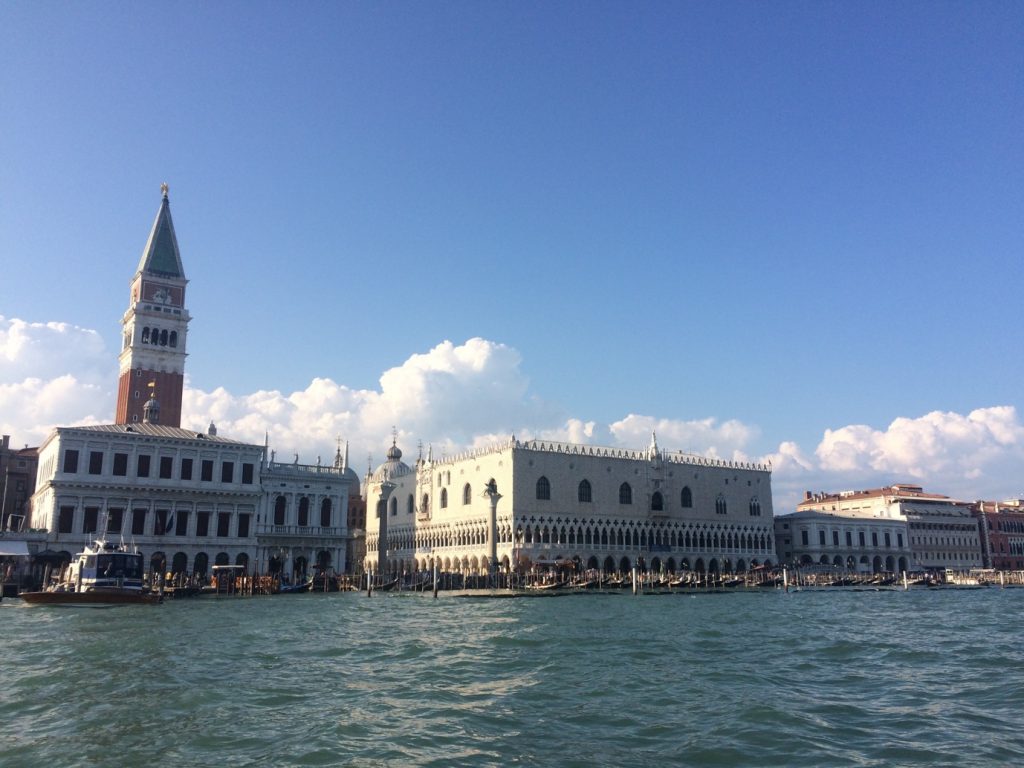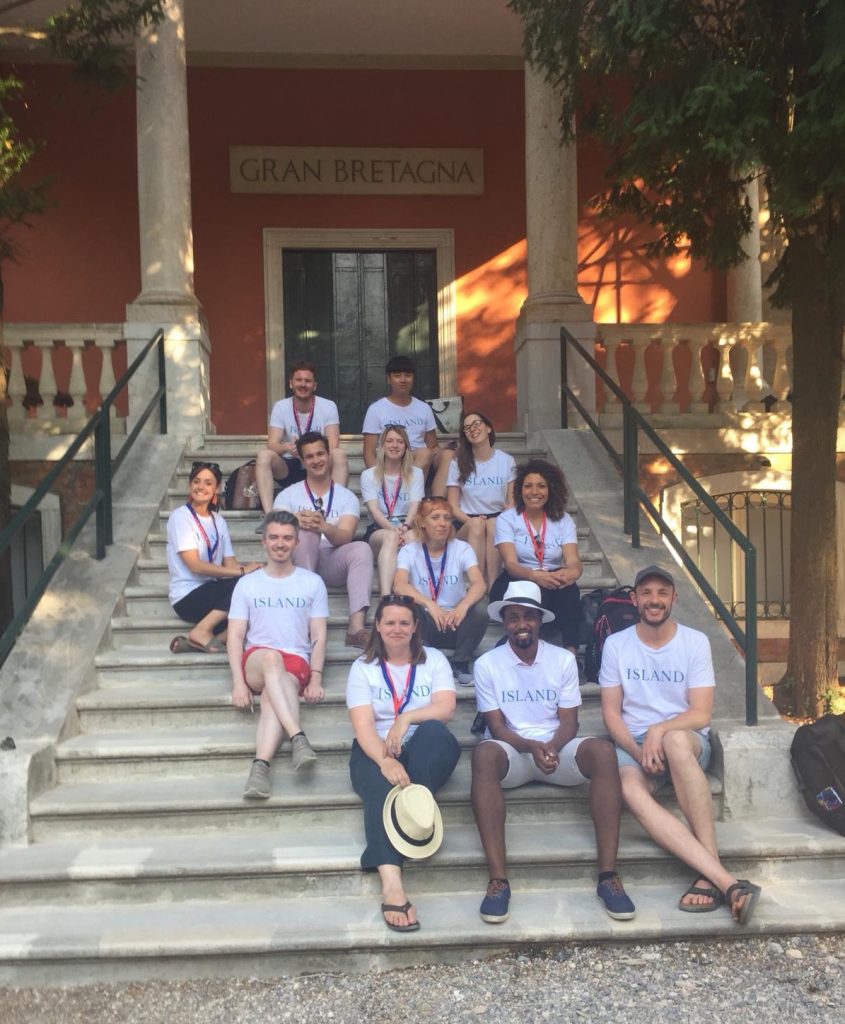Uli Gamper, MA Museum Cultures student, discusses his summer as one of Birkbeck’s first recipients of the British Council’s Venice Fellowships.

I was one of the lucky two students from Birkbeck’s History of Art department that was awarded a Venice Fellowship this year. The Venice Fellowship, a partnership between the British Council and Birkbeck, and other universities from all over the UK, supports students to spend a month’s time Venice during the Biennale di Venezia, one the world’s most renowned art/architecture biennials.
Inspired by topics encountered during seminars and lectures in my MA Museum Cultures, I formulated a research proposal around themes of cosmopolitan museology, representations of nationality and arising friction in the collision of local and global forces. The Venice Biennale and museums in general and the British Pavilion in particular were a rich pool for empirical research and observation on these subjects. Subsequently, I used the research conducted in Venice to inform the case studies for my dissertation.
I left for Venice in mid-May as I was part of the first group of fellows, working during the opening period of the Biennale. The great advantage of being part of the first group was to help to prepare the British Pavilion for the opening and meeting the team of the British Council that commissions the pavilion every year. Furthermore, Venice was packed with art, architecture and museum/heritage professionals from all over the world and hence it was a valuable opportunity to network. Last but not least, there were a plethora of great parties all over Venice during the opening week of the Biennale, and that was another unforgettable experience that we all hugely enjoyed.
My working week as a fellow was split into four days working at the British Pavilion. This consisted predominantly of engaging with the audience and introduce them to the installation. We also helped with the daily running of the pavilion as well as condition-checking the installation. The other three days we used to conduct our own independent research, which led me to visit most of the national museums in Venice and collateral events of the Biennale. Other highlights organised by the British Council were the staff seminars at the Peggy Guggenheim Foundation that we were allowed to attend. I had the opportunity to participate in a seminar with the head of exhibitions of the foundation that proved to be a very insightful experience.
Overall, there were many positive aspects about my time in Venice. I hugely enjoyed and benefited from being part of a group of 12 fellows from diverse academic disciplines such as Architecture, Fine Art and Graphic Design. This resulted in extremely fruitful exchanges and debates that informed my ongoing research positively. Apart from this benefit, I left with a bunch of incredible new friends. Venice itself was a bliss beyond words; the light, the sea, the absence of cars, the architecture I immersed myself and rested in awe in its shadow, all invaluable experiences and memories I took back to London with me.
 Upon my return to London, our group of fellows continued the discourse and organised an exhibition in August, held at a temporary space in Shoreditch. And it didn’t stop there; The British Council is keen to organise another show in the new year, featuring the research outcomes of Venice Fellows. I didn’t imagine that so many further opportunities would come along from this encounter.
Upon my return to London, our group of fellows continued the discourse and organised an exhibition in August, held at a temporary space in Shoreditch. And it didn’t stop there; The British Council is keen to organise another show in the new year, featuring the research outcomes of Venice Fellows. I didn’t imagine that so many further opportunities would come along from this encounter.
Yet again, and I couldn’t say it often enough, I would like to express my sincere gratitude to Birkbeck’s History of Art department for awarding me with this Fellowship and particularly to Sarah Thomas for being so supportive during the preparation for the Fellowship and after, many thanks!
